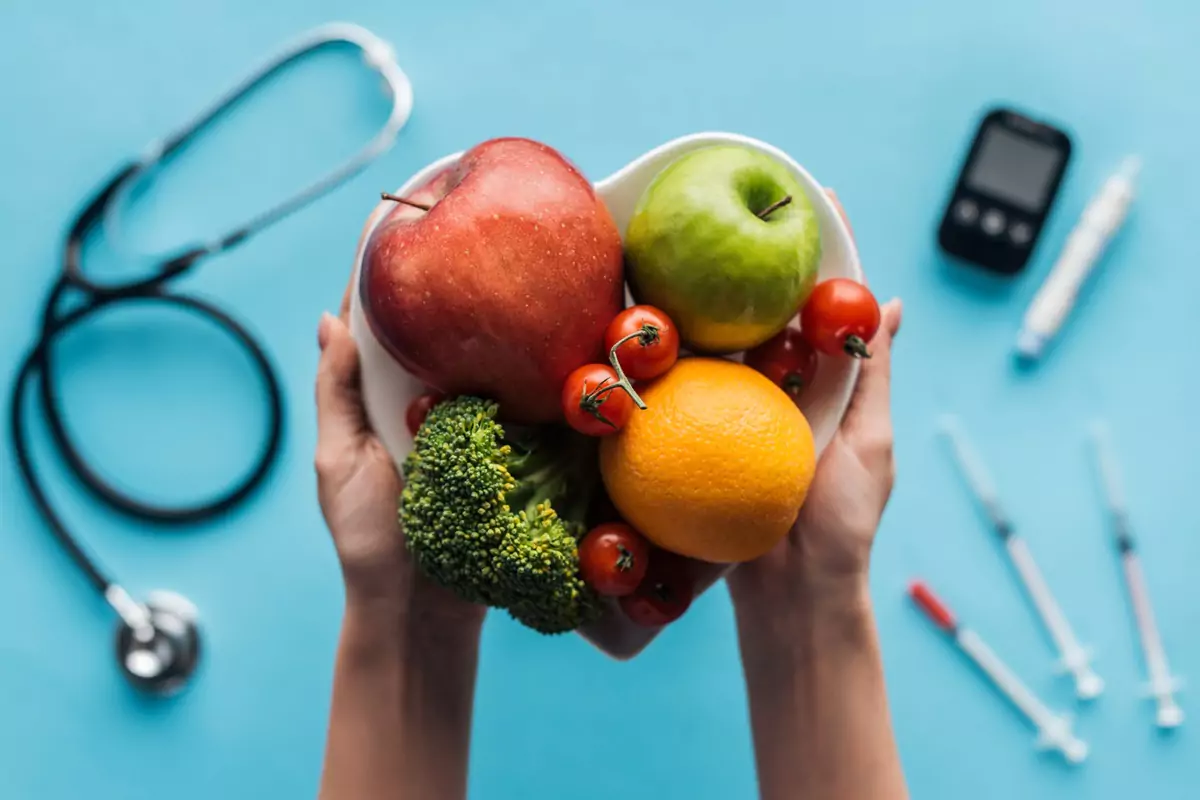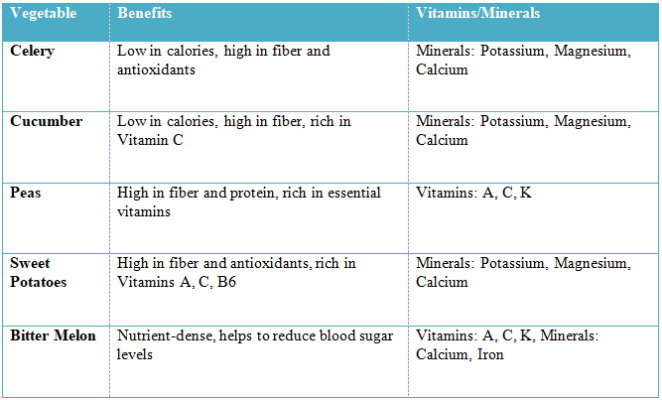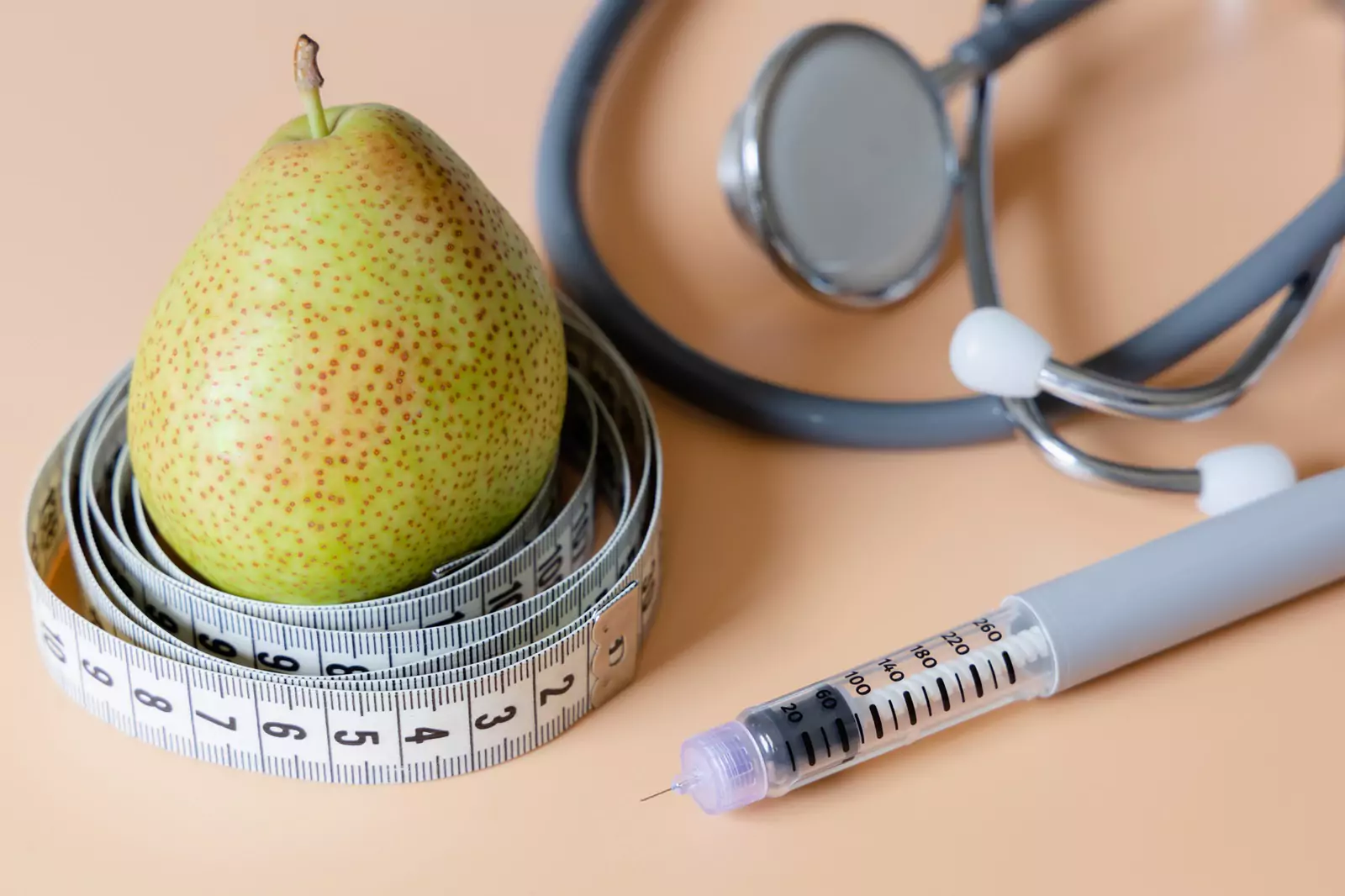DISCOUNT: UP TO 90% OFF






What Are The Healthiest Vegetables For Diabetics?


Table of Contents
- Healthiest Vegetables for Diabetics
- SugarMD Advance Glucose Support
- Benefits of Eating Vegetables for Diabetics
- 1. Lowering Blood Sugar:
- 2. Reducing Carbohydrate Intake:
- 3. High in Fiber:
- 4. Low in Calories:
- Which Vegetables Reduce Blood Sugar?
- 1. Spinach: A Superfood for Diabetes Management
- 2. Carrots: The Low-Glycemic Vegetable
- 3. Broccoli: An Ideal Veggie to Balance Blood Sugar
- Which Leaf Is Good For Diabetics?
- Preparation Tips for Diabetics
- How to Make the Vegetables Tasty?
- Conclusion
- About The Author
As the prevalence of diabetes continues to rise worldwide, individuals diagnosed with this condition are seeking ways to manage their blood sugar levels effectively. While medication and lifestyle changes play a vital role in diabetes management the right diet can make a significant difference. Vegetables are a crucial component of a healthy diet but not all vegetables are created equal. In this article, we'll what are the healthiest vegetables for diabetics? Helping you make informed choices for your well-being.
Healthiest Vegetables for Diabetics
Diabetics face many dietary restrictions due to their condition but there are still plenty of healthy vegetables that can be enjoyed. Eating vegetables is a great way for diabetics to gain essential nutrients and vitamins, while also helping to manage their diabetes. Celery: Celery is rich in minerals and vitamins and contains very few calories.
It is also high in fiber which helps to slow down digestion and keep blood sugar levels even. Celery is also a great source of antioxidants which can help to reduce inflammation and fight off free radicals. Cucumber: Cucumber is an incredibly low-calorie vegetable, making it an ideal choice for diabetics. It is also a great source of fiber which helps to slow digestion and keeps blood sugar levels stable. Cucumbers also contain a variety of vitamins and minerals, including Vitamin C and potassium.

Peas: Peas are an excellent source of fiber which helps to slow down digestion and keep blood sugar levels stable. They are also high in protein which helps to lower cholesterol and reduce the risk of heart disease. Peas are also rich in essential vitamins and minerals, including Vitamin A, Vitamin C and Vitamin K. Sweet Potatoes: Sweet potatoes are an excellent source of fiber and antioxidants which can help to reduce inflammation and improve overall health.
Sweet potatoes are also high in Vitamin A, Vitamin C and Vitamin B6 which help to support healthy blood sugar levels. Bitter Melon: Bitter melon is an incredibly nutrient-dense vegetable that is often used in traditional Chinese medicine. Bitter melon helps to reduce blood sugar levels and can help to reduce the risk of diabetes-related complications. It is also high in fiber which helps to slow down digestion and prevent spikes in blood sugar levels.
These are just some of the many healthiest vegetables for diabetics. Eating a variety of vegetables is important for diabetics as it provides essential nutrients and vitamins that are necessary for a healthy diet. Eating a wide variety of vegetables can also help to keep blood sugar levels stable and reduce the risk of diabetes-related complications.
SugarMD Advance Glucose Support
Maintaining healthy blood sugar levels can be a challenge. From carby meals to snacks and even with all the effort, it’s still not enough. That’s where SugarMD Advanced Glucose Support comes in. Our blend of traditional Ayurvedic herbs helps regulate blood sugar levels, curbs cravings, supports weight loss, and boosts metabolism and energy. Endorsed by endocrinologists, this supplement to lower blood sugar levels has a unique formula of pure, potent herbs that promote overall blood sugar health. Ideal for both pre-diabetics and Type 2 diabetics.
Benefits of Eating Vegetables for Diabetics
Eating healthy vegetables can help diabetics in many ways, especially when it comes to managing their blood sugar levels. Here are some of the biggest benefits of eating vegetables:
1. Lowering Blood Sugar:
- Celery, cucumber and peas contain compounds that reduce blood sugar levels
- Vegetables are naturally low in carbohydrates and sugar, making them an excellent choice for diabetics
2. Reducing Carbohydrate Intake:
- Vegetables are a better alternative to processed, high-carbohydrate foods
- Eating vegetables can help diabetics reduce their overall carbohydrate intake
3. High in Fiber:
- Fiber slows down digestion and keeps blood sugar levels stable
- Reduces hunger and cravings which can be helpful for managing diabetes
4. Low in Calories:
- Vegetables are naturally low in calories, making them helpful for weight management
- Eating low-calorie vegetables can reduce overall calorie intake and help maintain a healthy weight.
Overall, eating the healthiest vegetables for diabetics can be extremely beneficial. Not only can they help to reduce blood sugar levels they can also help to reduce carbohydrate intake, provide plenty of fiber and help to maintain a healthy weight. Eating these healthy vegetables can also be a tasty way to manage diabetes as long as diabetics are mindful of how they are preparing their vegetables.
Which Vegetables Reduce Blood Sugar?
Eating the right kind of vegetable is essential for diabetes management. Certain vegetables have been identified as helping to reduce blood sugar. These vegetables not only help to keep blood sugar levels in check but also provide valuable nutrients for overall health.
1. Spinach: A Superfood for Diabetes Management
Spinach is one of the most popular vegetables and rightly so. It is rich in vitamins A and C, minerals, fiber and phytonutrients, making it an excellent choice for diabetics. In addition the low-glycemic index of spinach makes it a great option for diabetics who need to manage their blood glucose levels. The antioxidants in spinach can help fight inflammation which is common for diabetics.
These antioxidants can also help reduce the risk of heart disease, stroke and other serious health issues. The high fiber content in spinach can help lower cholesterol levels and improve digestion. Furthermore, it helps to reduce appetite which can make it easier to maintain a healthy weight. Spinach is also a great source of magnesium which is essential for managing diabetes.
Magnesium helps to regulate blood sugar and insulin levels which are key in maintaining diabetes health. It also helps to reduce the risk of complications and can even help prevent type 2 diabetes.
The nutrients in spinach can also help diabetics to manage their diabetes better. It can help to reduce oxidative stress which can contribute to complications related to diabetes. Additionally, it helps to slow down the rate of glucose absorption which reduces blood sugar spikes.
Spinach also contains lutein and zeaxanthin which can help to improve vision and reduce the risk of retinopathy, a common complication of diabetes. Finally, spinach is a great choice for diabetics because of its low-calorie content and high nutrient value.
It is a great way to get the vitamins and minerals without significantly affecting the calorie intake. Spinach is a versatile vegetable, making it easy to incorporate into any meal. It can be enjoyed raw in salads, steamed, sautéed or blended into smoothies. With its numerous health benefits, spinach is an excellent choice for diabetics.
2. Carrots: The Low-Glycemic Vegetable
Carrots are a great vegetable choice for diabetics and those looking to manage their blood sugar levels. The vegetable is low in calories and carbohydrates, making them an ideal choice for controlling diabetes. Carrots are also a good source of dietary fiber which helps to slow down the absorption of sugar from the intestine into the bloodstream.
This helps to keep blood sugar levels in check. Carrots are rich in carotenoids which have been linked to have a positive effect on diabetes management. Carotenoids are antioxidants that help to reduce inflammation which can help reduce the risk of diabetes-related complications. Carrots also contain other compounds such as lutein and zeaxanthin which can help promote healthy vision and reduce the risk of age-related eye diseases.
In terms of glycemic index, carrots are considered to be a low-glycemic food, meaning they have a low effect on blood sugar levels. Studies have found that eating carrots can help to reduce post-meal blood sugar levels, when eaten in moderation. Carrots also contain a compound called alpha-carotene which is an antioxidant with anti-inflammatory properties. This compound has been shown to reduce the risk of cardiovascular disease in diabetics.
When preparing and cooking carrots, try to avoid adding too much oil or butter as this can increase the calorie content. Boiling or steaming carrots will help to retain the most nutrients.
For an extra flavor boost, try adding some freshly chopped herbs such as thyme or rosemary. Adding a sprinkle of cinnamon has also been known to help balance blood sugar levels. Eating carrots can be a great way to get the nutrients your body needs and also help to manage diabetes.
Carrots are low in calories and carbohydrates and are a good source of dietary fiber, carotenoids, lutein and zeaxanthin. Furthermore they have a low glycemic index which helps to keep post-meal blood sugar levels in check. When preparing and cooking carrots, try to keep it light by avoiding added fats and sugar and adding herbs and spices for flavor.
3. Broccoli: An Ideal Veggie to Balance Blood Sugar
If you’re looking for a veggie to balance your blood sugar levels, look no further than broccoli. Not only is it low on the glycemic index but it’s also packed with essential vitamins, minerals and fiber. Broccoli is a powerhouse of nutrients and has been linked to improved blood sugar control, cholesterol levels and insulin sensitivity. Broccoli is an excellent source of fiber.
It contains both soluble and insoluble fiber which can help slow down digestion and the absorption of sugar into the bloodstream. Research suggests that fiber can help regulate blood sugar levels and reduce the risk of diabetes-related complications. Broccoli contains glucosinolates, a phytochemical compound that helps activate enzymes in the body that can reduce insulin resistance.
Glucosinolates can also boost metabolism and help the body burn more fat which can help regulate blood sugar levels. Broccoli is also a good source of chromium, a mineral that helps cells respond to insulin and regulate blood sugar levels. Studies show that chromium can help lower blood sugar levels and improve insulin sensitivity.
Finally, broccoli is an excellent source of vitamins and minerals, including vitamin C, vitamin K, folate, calcium and magnesium. These vitamins and minerals play essential roles in regulating blood sugar levels. Vitamin C, in particular can help reduce inflammation and improve insulin sensitivity. Overall, broccoli is an ideal vegetable for people with diabetes.
It helps improve blood sugar control, regulate cholesterol levels and reduce insulin resistance. Plus, it’s packed with fiber, vitamins, minerals and other nutrients that can help you maintain optimal health. For this reason, it’s important to include broccoli in your diet if you have diabetes.
Which Leaf Is Good For Diabetics?
When choosing vegetables for a diabetic-friendly diet, certain leafy greens are a must-have. Leafy greens like spinach, kale and collard greens are all excellent additions to any diabetic plate and provide a bounty of nutrients to support healthy blood sugar levels. Kale is another leafy green that is a valuable addition to any diabetic plate. It is extremely low in carbohydrates and calories, making it an ideal vegetable for diabetics who are trying to control their weight.
Kale is also a good source of fiber and vitamins which can help manage blood sugar levels. Additionally, it contains flavonoids which can help reduce inflammation that is associated with diabetes. Collard greens are an excellent source of folate, a B vitamin that helps regulate blood sugar levels. They are also a good source of fiber and other vitamins and minerals to support a healthy diabetic diet.
Collard greens are also low in carbohydrates which helps to reduce the glycemic index of a meal. Overall, leafy greens are an essential part of any diabetic diet. They are an excellent source of fiber, vitamins and minerals that can help manage and even reduce blood sugar levels.
Eating a variety of leafy greens can help to ensure that diabetics get the nutrients they need without adding too much carbohydrates to their diet. Additionally, leafy greens are incredibly versatile and can be cooked a variety of ways to make them enjoyable and delicious!
Preparation Tips for Diabetics
When it comes to preparing vegetables for diabetic diets there are a few key points to keep in mind. For starters, it’s important to choose the freshest vegetables available. This means picking vegetables that are ripe and at their peak of flavor.
It’s also important to purchase organic vegetables whenever possible as they are grown without the use of synthetic pesticides or herbicides. When preparing vegetables, it’s important to use healthy fats to cook them.
This includes olive oil, coconut oil, avocado oil and other healthier alternatives. Avoid using butter, lard and other unhealthy fats to cook vegetables. In addition to choosing the right fats, it’s important to avoid adding sugars when cooking vegetables. This includes using sweeteners such as honey, agave nectar or any other type of processed sugar. Finally, it’s important to store vegetables properly to ensure quality and freshness.
This means wrapping them in paper towels and storing them in the refrigerator. To help retain the quality of the vegetables, it’s best to store them in the lower part of the refrigerator as this is the coldest part.
Preparing vegetables for a diabetic-friendly diet does not have to be a difficult process. By following the tips outlined above, diabetics and those looking to eat healthier can easily enjoy a variety of nutritious and delicious vegetables.
Not only is it important to choose and prepare the right vegetables but it’s also important to make them delicious. One way to do this is to roast vegetables. This method of cooking brings out the natural sweetness of the vegetables and adds flavor. It’s also a great way to make vegetables crispy and crunchy. Another way to make vegetables tasty is to grill them. This method of cooking adds smokiness and depth of flavor to vegetables.
It’s also a great way to get the vegetables charred which many people love. Stir-frying is another great option for making vegetables tasty. This method of cooking adds texture and flavor to the vegetables. It’s also a great way to incorporate other ingredients and spices into the mix. Finally, adding spices can be a great way to make vegetables more enjoyable.
Spices like garlic, thyme and oregano can add flavor and aroma to vegetables, making them more appealing and enjoyable. By following these preparation tips, diabetics can enjoy a variety of delicious and healthy vegetables. Not only can these vegetables help manage diabetes but can also be tasty and enjoyable.
How to Make the Vegetables Tasty?
Vegetables are not just healthy they can also be tasty and enjoyable. Here are some tips to make the healthiest vegetables for diabetics even more delicious. Roasting is one of the best ways to bring out the natural sweetness of vegetables and create a savory, caramelized flavor. To roast vegetables, preheat the oven to 400°F then spread the vegetables on a baking sheet lined with parchment paper.
Drizzle the vegetables with olive oil and season with salt, pepper and any herbs or spices of your choosing. Roast for 20-25 minutes, stirring once or twice, until the vegetables are tender and lightly browned. Grilling is another great way to bring out the natural sweetness of vegetables.
Heat an outdoor or indoor grill to medium-high heat then brush the vegetables with oil, season with salt, pepper and any herbs or spices of your choosing. Grill the vegetables for 2-3 minutes per side or until the vegetables are lightly charred and tender.
Stir-frying is a great way to quickly cook vegetables, while preserving their nutrients and adding flavor. Heat a wok or large skillet over medium-high heat then add a tablespoon of oil. Once the oil is hot, add the vegetables and stir-fry for 3-4 minutes, stirring frequently. Add sauces or seasonings for extra flavor. Adding spices is a simple way to give vegetables a burst of flavor.
Try using herbs such as rosemary, thyme and oregano or spices such as coriander, cumin, paprika and turmeric. Experiment with different combinations or use pre-mixed spice blends.
Making the healthiest vegetables for diabetics tasty isn’t hard. Roasting, grilling, stir-frying and adding spices are all great ways to cook vegetables to perfection, while adding flavor and making them enjoyable to eat. With these cooking methods and tips, you can create delicious and nutritious meals that are great for diabetes management.
Conclusion
When it comes to managing diabetes, eating the right foods is key. Eating healthy vegetables can be especially beneficial for individuals with diabetes as they are a low-calorie, nutrient-dense food that can help balance blood sugar and reduce carbohydrates. Celery, cucumbers, peas, sweet potatoes and bitter melon are some of the healthiest vegetables for diabetics.
All of these vegetables provide essential nutrients, fiber and antioxidants that can help balance blood sugar, reduce carbohydrate intake and lower blood sugar. There are a variety of different ways to make vegetables both healthier and more flavorful. Roasting, grilling, stir-frying and adding spices are all excellent ways to add flavor to vegetables and make them more enjoyable to eat. In conclusion, when it comes to managing diabetes, eating the right foods is essential.
Eating healthy vegetables can be especially beneficial for diabetics as they are low-calorie, nutrient-dense foods that can help balance blood sugar and reduce carbohydrate intake. Celery, cucumbers, peas, sweet potatoes and bitter melon are some of the healthiest vegetables for diabetics and eating them regularly can provide a variety of health benefits.
Moreover there are a variety of different ways to make vegetables both healthier and more enjoyable to eat. Properly preparing and cooking vegetables while avoiding added sugars and storing them properly can help to maximize their health benefits.
About The Author
Meet Dr. Ahmet Ergin a highly skilled and dedicated endocrinologist with a passion for diabetes care. Dr. Ergin earned his medical degree with honors from Marmara University in Istanbul. He completed internal medicine residency and endocrinology fellowship at Cleveland Clinic.
Dr. Ergin is board-certified in Internal Medicine, Endocrinology, Diabetes and Metabolism due to his vast medical expertise. He's a certified diabetes educator, author of "The Ultimate Diabetes Book," and founder of "the SugarMD YouTube channel." Dr. Ergin offers exceptional diabetes care to his patients in Port Saint Lucie, FL, helping them manage effectively.
Disclaimer: These statements have not been evaluated by the Food and Drug Administration. Information on this website isn’t intended to treat, cure or prevent any disease. Discuss with your doctor and do not self-treat.
Written By Dr. Ahmet Ergin
461 total articles
Meet Dr. Ahmet Ergin, a highly skilled and dedicated endocrinologist with a passion for diabetes care. Dr. Ergin earned his medical degree with honors from Marmara University in Istanbul. He completed internal medicine residency and endocrinology fellowship at Cleveland Clinic. Dr. Ergin is board-certified in Internal Medicine, Endocrinology, Diabetes, and Metabolism due to his vast medical expertise. He's a certified diabetes educator, author of “The Ultimate Diabetes Book,” and founder of “the SugarMD YouTube channel.” Dr. Ergin offers exceptional diabetes care to his patients in Port Saint Lucie, FL, helping them manage effectively. For a closer look into his insights and experiences, connect with Dr. Ahmet Ergin on LinkedIn, Instagram, and YouTube.”
Disclaimer: These statements have not been evaluated by the Food and Drug Administration. Information on this website isn't intended to treat, cure or prevent any disease. Discuss with your doctor and do not self-treat.
Products













